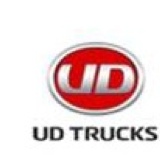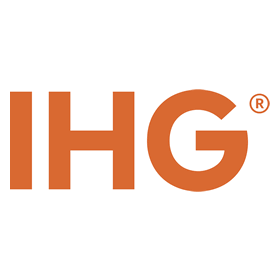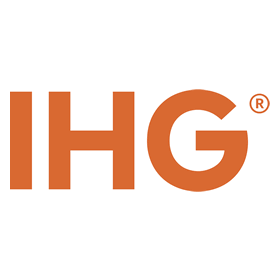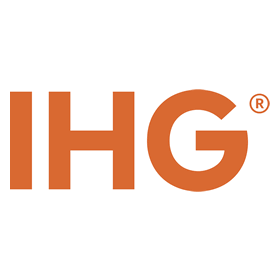Information
-
Document No.
-
Audit Title
-
Client / Site
-
Conducted on
-
Prepared by
-
Location
-
Personnel
1. FIRE & EMERGENCY
-
Are all emergency exits signed, clear and unobstructed? (internally and externally)
-
Are all fire equipment maintained, signed, tagged and appropriate to hazard?
-
Are exit doors easily opened from inside?
-
Is fire alarm system functioning correctly (if applicable)?
-
Are sprinkler heads unobstructed (if applicable)?
-
Are fire instructions available and displayed? (including designated personnel)
-
Are regular fire drills carried out (documented records within last 12 months)
-
Are minimum quantities of flammables stored at workstations?
-
Are employees smoking only in non-smoking areas?
-
Are there accumulations of rubbish or debris in a position that may present a risk of fire (eg under buildings)?
-
Are gutters clean and no tree foliage over hanging buildings?
-
Is emergency lighting operational?
2.ELECTRICAL
-
No evidence of broken plugs, sockets or switches?
-
Do electrical installations generally appear safe?
-
Any leads, plugs or equipment requiring repair/ replacement? (i.e. frayed/ strained or defective)
-
Are extension cords located off floor & in safe areas (i.e. no water, trip hazards)?
-
No work near exposed live electrical equipment?
-
Have tools, leads and appliances been checked and tagged in accordance with relevant regulations / standards?
-
Is there a procedure in place for the lock down and tagging of faulty equipment?
-
Are switchboards clear and secured?
3. GENERAL LIGHTING
-
Are light fittings clean and in good condition? (no flickering or inoperable lights)
-
Is there adequate lighting?
-
No direct or reflected glare?
4. SLIP AND TRIP HAZARDS
-
Are waste bins emptied regularly?
-
Is recyclable material separated and placed in appropriate bins provided?
-
Walkway areas at the workshop are clean ,coloured defined and free from obstruction
-
Is there adequate vision around corners?
-
Is spill management material readily available for quick cleanup of spills?
5. PEDESTRIAN/VEHICLE ACCESS
-
Has sufficient consideration for pedestrian/vehicle interaction been made (e ghave pedestrian walkways been marked externally, crossing, signage)?
-
Is pedestrian / vehicle right of way clearly defined?
-
Are roadways in good repair and free of obstructions?
-
Is there adequate signage internally (i.e. speed limit signs, mirrors, authorised personnel)?
-
Is there adequate signage externally? (i.e. speed limits, pedestrian access, and mirrors)
6. OFFICE HAZARDS
-
Are office setups ergonomically sound (i.e. desk, computer/ chair)?
-
Is electrical equipment tagged and in good condition?
-
Are walkways clear of obstructions (i.e. boxes, cords, chairs)?
-
Is area clear of sharp corners, broken furniture, trip hazards (cables)?
-
Are chairs in working order (no broken legs, faulty wheels)?
7. MACHINE OPERATIONS
a) Static equipment
-
Manufacturer’s manuals are kept for machinery operation and maintenance
-
Are warnings, safety signs and instructions displayed?
-
Are machines adequately guarded?
-
Are starting and stopping switches within easy reach?
-
No evidence of oil and grease around equipment? (collection trays required)
-
Are regular inspections of equipment carried out?
-
Has the operator been trained in the use of the equipment and licensed?
b) Mobile equipment
-
Are guards in place and in good condition?
-
Is data plate visible and state maximum load capacity?
-
Are mast, tynes, safety cage and tyres in good condition on forklifts?
-
Are prestart forklift checks completed daily?
8. WORK BENCHES
-
Are workbenches set at a comfortable height?
-
Are workbenches clear of rubbish?
-
No evidence of unmarked containers (i.e. drink bottles) on workbenches?
9. FLOORS
-
Is there even surfaces, no cracks or holes?
-
Have non slip materials (i.e. strips / plates ) been installed where needed?
-
Are there designated walkways through the workshop, and are they adequately marked?
-
Is the workshop floor clean, is there a floor cleaner available?
10. STORAGE
-
Is material stored in racks/ bins if possible?
-
Is racking in good condition (i.e. no damage, bending of beams)?
-
Is material secure, not stored too high?
-
Can stored materials be reached safely, by hand or mechanical means?
-
Is area free from rubbish and obstruction?
11. MANUAL HANDLING
-
Have staff been trained in 'correct lifting techniques' and are there JSP’s displayed?
-
Can lifting be undertaken between knee and shoulder height?
-
Is there lifting equipment available as an alternative to manual handling (i.e. hoists, trolleys)?
-
Are employees lifting loads in the workshop/ office in a safe manner?
12. CHEMICAL HANDLING
-
Is an MSDS available for all chemicals?
-
Does the workplace have a hazardous goods register, listing chemicals used at the workplace?
-
Are there any written procedures for the introduction of new substances to the workplace?
-
Are containers clearly labelled (including product name and UN number)?
-
Has a training program for people using chemicals been established?
-
Do special storage conditions apply (i.e. bunded areas)?
-
Are chemicals stored correctly?
-
Are pressurised cylinders (LPG / O2 / Refrigerant cylinders etc.,) stored in accordance with AS 4332:2004
-
Is chemical waste disposed of correctly?
-
Is appropriate PPE available for chemicals in use? (i.e. goggles, gloves, aprons)
-
Are health checks necessary, and have these been established and documented?
13. FIRST AID
-
Are first aider’s names and numbers displayed in prominent places and at F/A kit?
-
Are first aid cabinets clean and tidy and well stocked?
-
Is there easy access to F/A cabinets?
-
Are all employees aware of the location of F/A kits, and are kits adequately signed?
-
Are emergency numbers displayed?
-
Is there adequate supply of soap, towels and F/A kits?
-
Do F/A kits include a note book for recording F/A treatment?
-
Is there a record of treatment and first aider involved?
-
A safety shower/ eyewash is provided where hazardous chemicals are in use?
-
Are safety showers/ eyewashes well maintained and access unobstructed?
14. PPE
-
Is there a site policy for high visibility/foot protection established and displayed?
-
Is PPE available for tasks with risk of injury and are employees using PPE?
-
Are receptacles for PPE full of stock (i.e. ear plugs in dispenser)?
-
Are gloves available for prevention of hand injuries?
-
Are glasses/ goggles available for prevention of eye injuries?
-
Is there a requirement for foot protection in workshop?
-
Is there adequate provision of PPE for outdoor work? (i.e. hats and sunglasses)
-
Is there signage to indicate mandatory wearing of PPE?
-
Management and supervisors enforce mandatory use of PPE?
15. WELDING
-
Are gas bottles securely fixed to trolley or racks?
-
Is a fire extinguisher located close to welding area?
-
Are vision screens used for electric welding?
-
Is PPE provided and worn by operator?
-
Is the Hot work permit system used?
-
Are gas equipment hoses not excessive in length and are free from damage?
-
Are gauges, hand pieces and associated accessories for gases not damaged?
-
Are flashback arrestors adequately sized and fitted to portable and mobile oxy-fuel gas systems for welding, cutting and heating metal?
16. FALL PREVENTION
-
Are platforms available for safely working at height? (i.e. 2 meter platforms)
-
Do platforms have secure handrails, guards or fence panels?
-
Full harness and lanyard provided and in use?
-
Are all drains, pits, excavations covered or barricaded?
-
Are unsafe areas signposted and fenced?
-
Is there any work occurring at height without any fall prevention equipment / fall prevention process in place?
17. PLATFORMS
-
Are platforms in good condition?
-
Are platforms positioned at correct angle or proximity to structure?
-
Are straight or extension ladders securely fixed at top and on firm ground?
-
Are platforms conforming to AS and no home made units in operation?
18. LIFTING GEAR / PROPS
-
Is equipment regularly inspected and recorded ie cranes, hoists and gantries?
-
Are safe working loads marked clearly on forklifts, jacking equipment, vehicle hoists?
-
Vehicle stands are inspected and maintained?
-
Are safety latches on hooks in good working order?
-
Are chains in good condition and stored correctly?
-
Is there adequate pendant indication?
-
Are safety stands in a safe condition and available for working on tipper bodies?
-
Can safety props /stands be secured to vehicles when in use?
19. STAIRS/ LANDINGS
-
Are steps in good condition?(No broken or worn steps)
-
Are handrails in good repair?
-
Are stairs clear of obstructions and debris / spillages?
-
Are there non slip treads and kick plates where required?
20. WORKPLACE ERGONOMICS
-
Is the workstation and seating design acceptable?
-
Is ergonomics considered in work layout and tasks?
-
Is there use of excessive force and repetitive movements?
21. AMENITIES & HYGIENE
-
Are toilets, locker and wash rooms clean?
-
Is lunch room clean and tidy? (fridges and sinks clean, waste removed)
-
Is there adequate rubbish removal?
22. NOISE MANAGEMENT
-
Are noise levels maintained to acceptable standards?
-
Adequate engineering controls in high noise areas? (i.e. isolation, enclosure)
-
Are hearing protection areas signposted and enforced?
23. OH&S ADMIN
-
OHS Policy displayed in reception area and on HSE notice-boards in workplace
-
Injury Management Policy and related procedures and available procedures displayed?
-
Are pre-employment medicals carried out and assessed for new employees?
-
RTW coordinator in place and appropriately trained and details communicated on site?
-
All injured workers are given a return to work plan upon return to work?
-
Are all Return to Work Plans are signed/ approved by RTW coordinator, injured worker, supervisor/manager and medical practitioner?
-
Are site safety representative(s), & committee in place and appropriately trained?
-
Is HSE committee poster current and displayed on HSE notice board?
-
Are regular safety meetings held and safety issues addressed by site?
-
Are all injuries and near misses recorded and investigated by site management or rep?
-
Are HSE minutes are displayed on HSE notice-board?
-
Are relevant job safe procedures communicated and located in key areas?
-
Are regular mini-HSE audits completed monthly by site and reported to HSE committee?
-
Is Risk Register in place, maintained and reviewed regularly?
-
Does Risk Management occur before any purchases of equipment or changes to systems of work or work environment?
24. CONTRACTOR AND LABOUR HIRE MANAGEMENT
-
Are all contractors and labour hire workers inducted?
-
Are pre-employment medicals conducted for labour-hire employees?
-
Are contractors and labour-hire are supervised and work performance monitored and reviewed?
25. BREAKDOWNS & OFFSITE WORK
-
Are breakdown vehicles fitted with appropriate safety equipment (ie safety cones, lights, spill kits, phone) ?
-
Are employees appropriately trained in JSP for breakdown work?


















